Evolving the digital cockpit on the path to autonomous driving
The new battleground for competition among automakers has shifted to the cockpit. Sachin Lawande, president and CEO of Visteon Corporation, reveals the advancements in cockpit electronics that will help the industry embrace the era of digitisation and autonomous driving.

The new battleground for competition among automakers has shifted to the cockpit. Sachin Lawande, president and CEO of Visteon Corporation, reveals the advancements in cockpit electronics that will help the industry embrace the era of digitisation and autonomous driving.
Technology is moving ahead faster than ever and advances in software technology – in particular cloud and artificial intelligence – are transforming virtually every industry. The automotive industry is undergoing its most significant transformation in recent times, as multiple trends driven by advances in technology are impacting the industry simultaneously.
Just a few years ago, the automotive industry was considered a relative backwater when it came to software technology. Exterior design, engine power and driving dynamics were the most important factors determining a vehicle’s success. However, the past decade saw an unprecedented transformation of the digital lifestyle of consumers with the advent of smartphones and cloud services. Consumers started to expect their cars to be part of this connected and digital ecosystem. Auto manufacturers had to respond to this broad consumer trend, and the new battleground for competition among automakers shifted to the cockpit. Cars now are marketed more on the richness of the cockpit electronics such as digital instrument clusters and connected infotainment systems with large displays to enable easy and intuitive interaction with driving information and entertainment.
TECH TRENDS IMPACTING COCKPIT ELECTRONICS
The key technology-driven trends impacting automotive cockpit electronics are the connected car and autonomous driving. Additionally, carmakers globally are adding electric vehicles to their portfolios. These trends are driving growth of automotive cockpit electronics at a rate more than four times faster than underlying global vehicle production growth. As a global leader in cockpit electronics, Visteon is developing new and innovative solutions to address industry needs.
The connected car trend is the driving force behind the fast growth of the two key products in cockpit electronics – instrument clusters and infotainment – which make up about two-thirds of the total cockpit electronics market.
Traditional instrument clusters were built using multiple analog meters for displaying information such as vehicle speed, fuel level and rpm. Safety-critical information was typically displayed using indicator lights with illuminated ‘tell-tale’ symbols or text.
Analog instrument clusters with illuminated tell-tales were fixed function devices that limited a car manufacturer’s ability to show digital information such as turn-by-turn navigation, radio data and other digital information that was becoming available as technology evolved. The need to show this digital information to drivers in an easy-to-read manner resulted in the evolution of the instrument cluster first to analog-digital hybrid that combined meters with small, less than 5-inch digital displays.
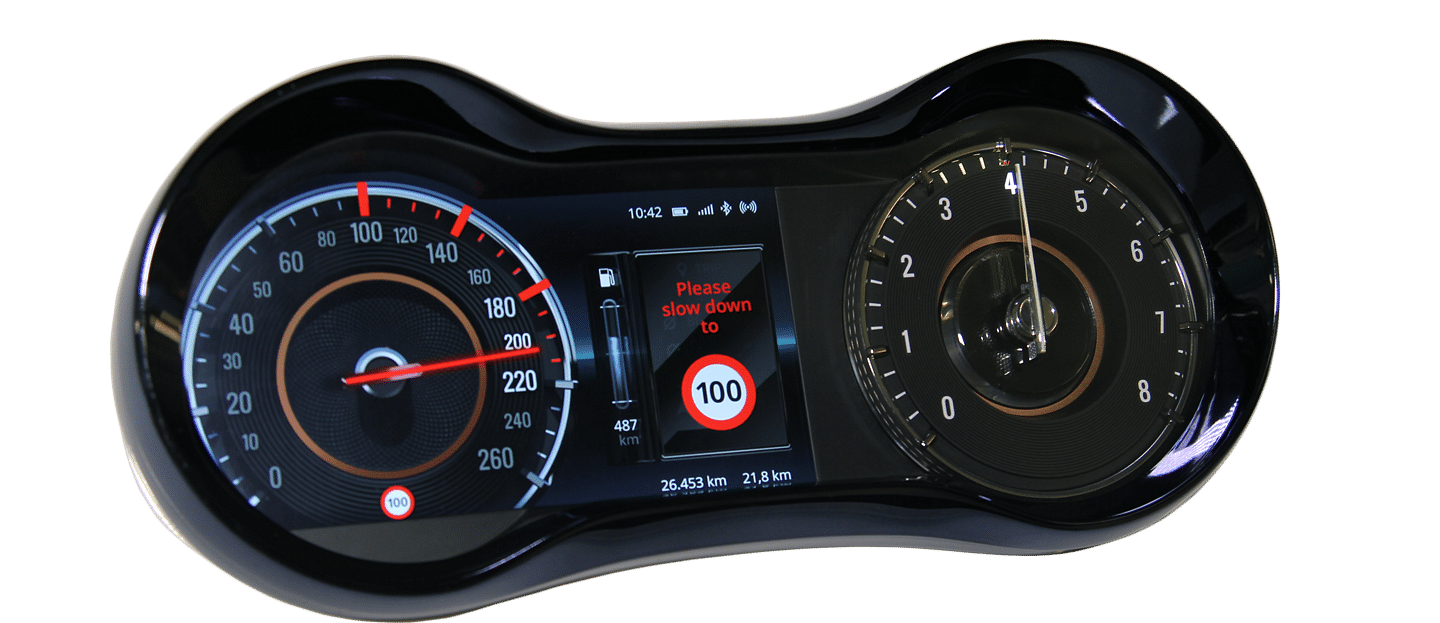
Hybrid instrument clusters, currently the largest segment, offer a good balance between cost and functionality.
The hybrid instrument cluster is very popular and is currently the largest segment of the market, offering a good balance between cost and functionality. However, as larger digital displays with sizes of 10.25 inches and greater became more affordable, it allowed the industry to build clusters that were completely digital and therefore fully upgradeable via software. Car manufacturers could offer different modes for display of information in the instrument cluster depending on the driving mode of the vehicle,
such as 'comfort' or 'sport'. In addition, all-digital clusters offered the benefit of being 'future proof', as carmakers could support any new feature through a software upgrade versus having to design a new instrument cluster.
Visteon is one of the largest suppliers of instrument clusters to
car manufacturers globally and is leading the industry in the transition to all-digital clusters. Visteon’s Kepler and Einstein instrument cluster platforms are the most successful cluster technology platforms in the industry. In the first nine months of 2017, Visteon won $2.6 billion (Rs 16,424 crore) of new business in instrument clusters – nearly all of it in all-digital clusters.
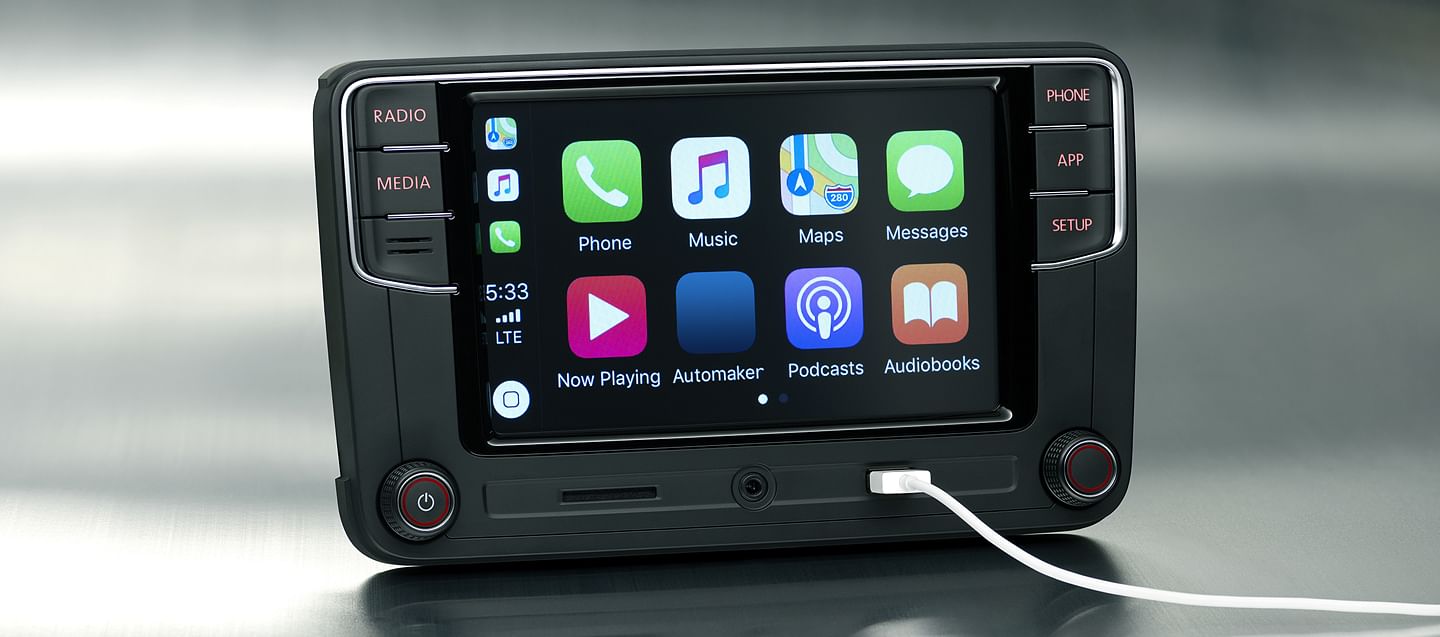
New entry-level infotainment systems, also known as display audio systems, leverage smartphones for connected services using tech such as CarPlay from Apple and Android Auto from Google.
Infotainment systems that offer entertainment and driving information features such as multimedia and navigation are the largest segment of the automotive cockpit electronics market. These infotainment systems are becoming increasingly connected to the internet, further adding to their consumer value. New, entry-level infotainment systems referred to as display audio systems leverage smartphones for connected services using technologies such as CarPlay from Apple and Android Auto from Google. These display audio systems are quickly becoming default equipment on mass market vehicles, replacing conventional AM/FM radios.
Luxury and higher-trim vehicles are offering infotainment systems with larger displays, typically 10 inches or larger, with embedded in-vehicle internet connectivity, enabling the delivery of cloud services such as streaming internet radio, vehicle health monitoring, and location-based services. These systems typically also include
over-the-air updates to keep the systems fresh and up-to-date.
RE-IMAGINING AUTO INFOTAINMENT
Visteon was the first to recognise the need to make in-vehicle infotainment systems the next mobile computing platform and launched the Phoenix infotainment system at CES 2017 in Las Vegas earlier this year.
Phoenix uses HTML5 technology as the foundation for running apps that can access local device and internet-based resources to offer
a cutting-edge infotainment experience. Visteon also strengthened its technology capability through the 2016 acquisition of AllGo Systems, a leader in integration of smartphone projection capabilities such as Apple CarPlay and Google Android Auto.
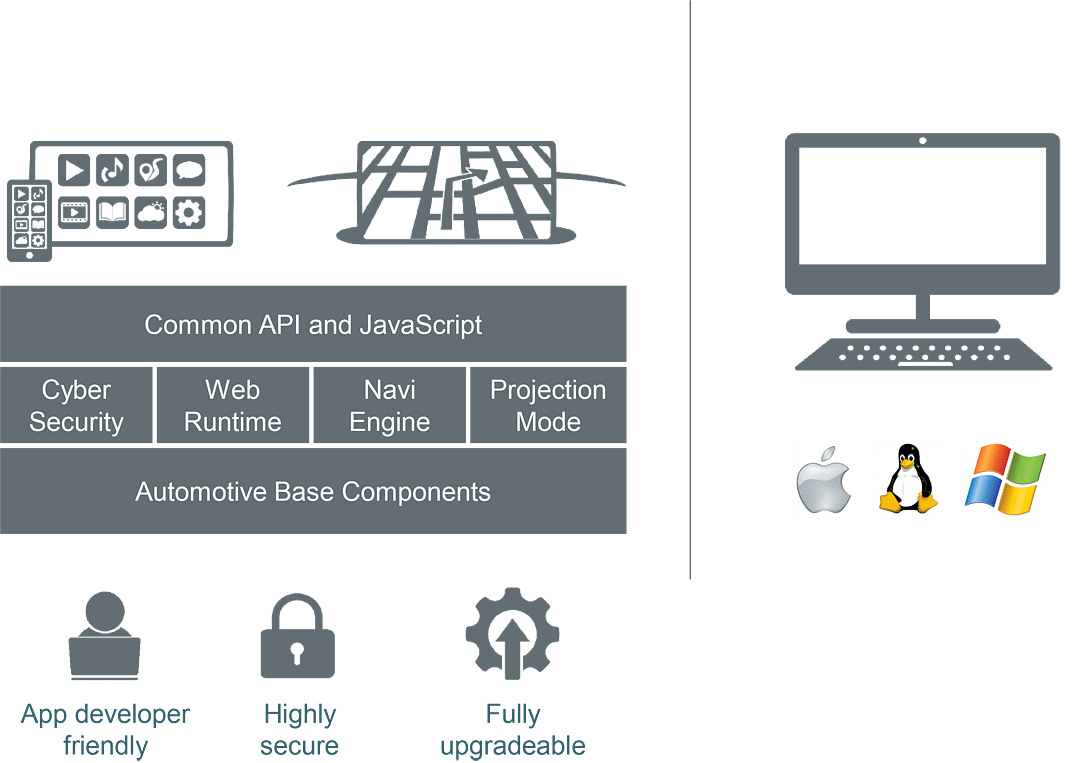
With the Phoenix platform, which is inherently cloud-aware through its use of HTML5 and other Internet tech, car manufacturers can now offer an infotainment system that can continually provide new apps developed by themselves or third parties.
Phoenix is radically different from today’s infotainment systems, which are mostly static without the possibility of third-party apps. Besides built-in applications such as AM/FM tuner, USB/SD Multimedia, Bluetooth hands-free and audio, and navigation, with Phoenix car manufacturers can finally offer an infotainment system that can continually provide new apps developed by themselves or third parties. The technology is designed to be inherently cloud-aware through its use of HTML5 and other internet-oriented technologies.
The introduction of all-digital clusters and rich infotainment systems has been very good for consumers but for car manufacturers, the higher cost of these new systems compared with earlier versions has had a significant negative impact. Car manufacturers are not able to pass all of the cost increase to consumers, and have been looking for solutions to address this issue.
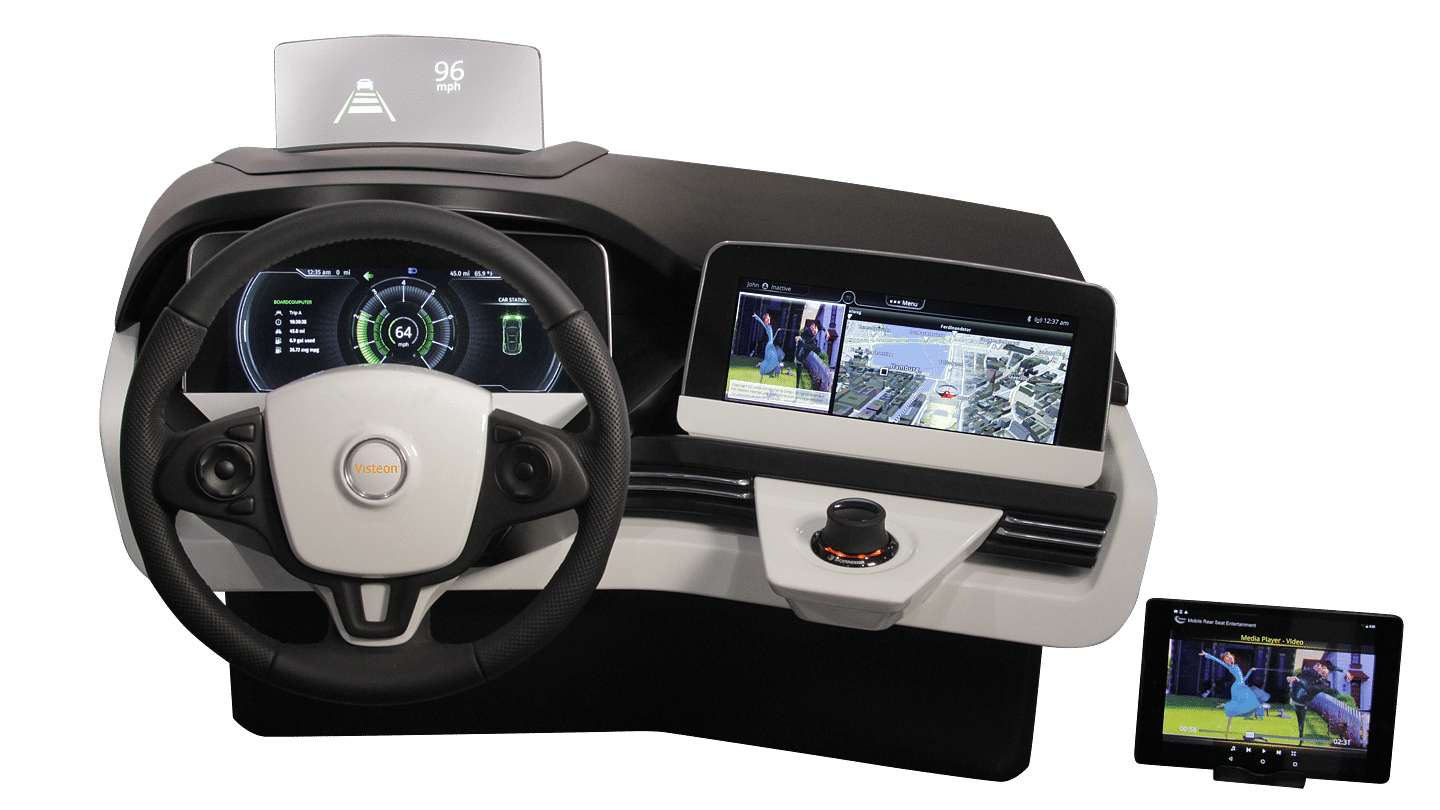
Visteon's SmartCore leverages new silicon and software technologies to offer an integrated instrument cluster plus infotainment system on a single system-on-chip.
Visteon was the first to introduce a new solution, called SmartCore, which leverages new silicon and software technologies to offer an integrated instrument cluster plus infotainment system on a single system-on-chip or SOC. This is the newest trend in cockpit electronics, and Visteon has the lead in providing these solutions with four OEM programs in development, with the
first market launch slated for early 2018.
The combination of instrument cluster technologies that offer scalability from hybrid to all-digital clusters, the latest infotainment technology based on HTML5, Phoenix, and the SmartCore cockpit domain controller technology enables Visteon to meet the needs of car manufacturers globally for their next-generation of all-digital cockpits.
THE NEW FRONTIER: AUTONOMOUS DRIVING
Self-driving cars are no longer only the domain of fiction, as technology advances are making self-driving era a reality. However, autonomous driving capability will not happen overnight; it will evolve over several years with successively higher levels of self-driving capabilities.
Autonomous driving technologies offer tremendous benefits to consumers. Nearly half of fatal road accidents can be avoided through these technologies. Surveys show that consumers are very interested in driver-assist technologies that can make driving safer and more enjoyable.
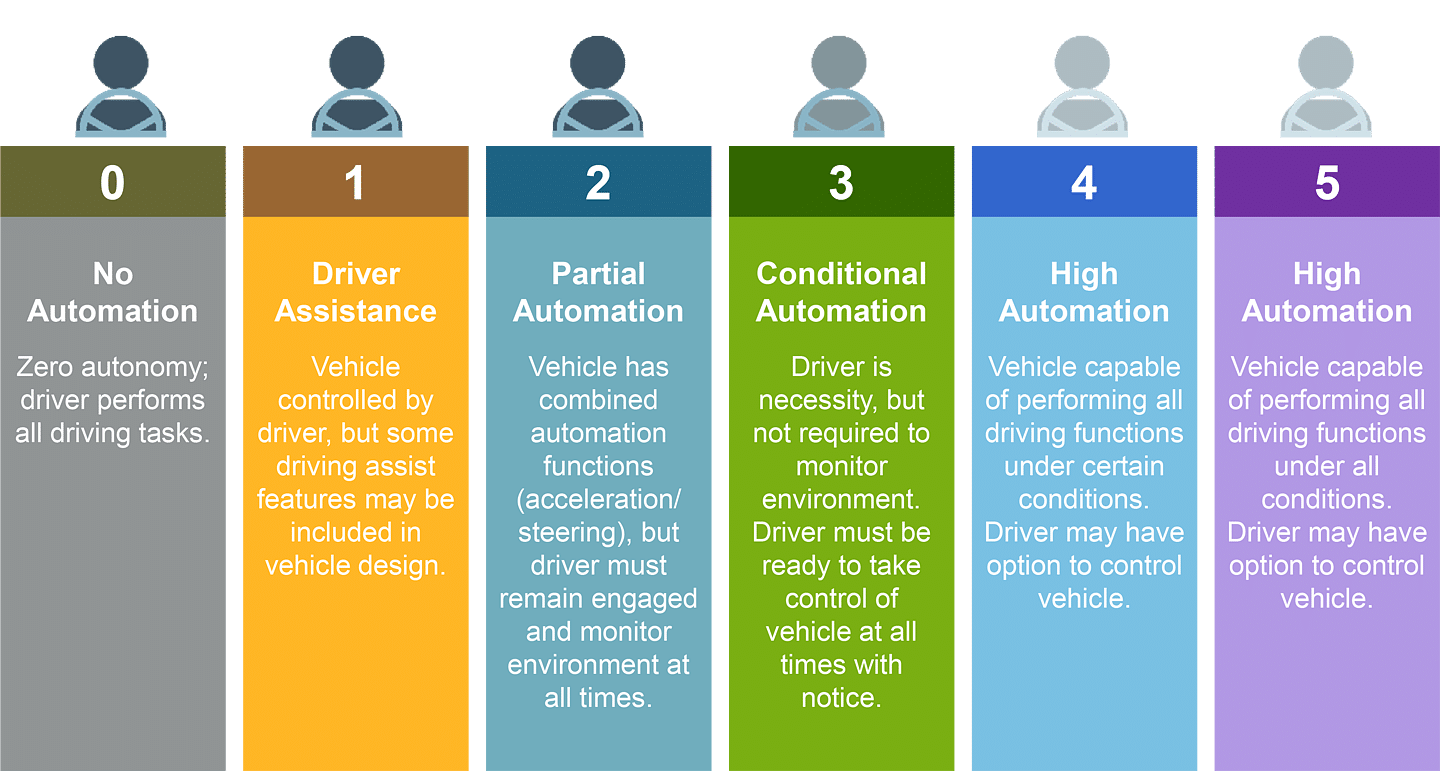
The five levels of automation in autonomous driving (SAE International).
The automotive industry has defined five levels of autonomous driving . The current level of technology available to the industry is capable of offering Level 3 automation such as self-driving on highways. The driver is still expected to monitor the environment and take over the vehicle if necessary. This level of autonomous driving makes use of exciting new technologies such as machine learning, using sensors such as radar, Lidar and cameras.
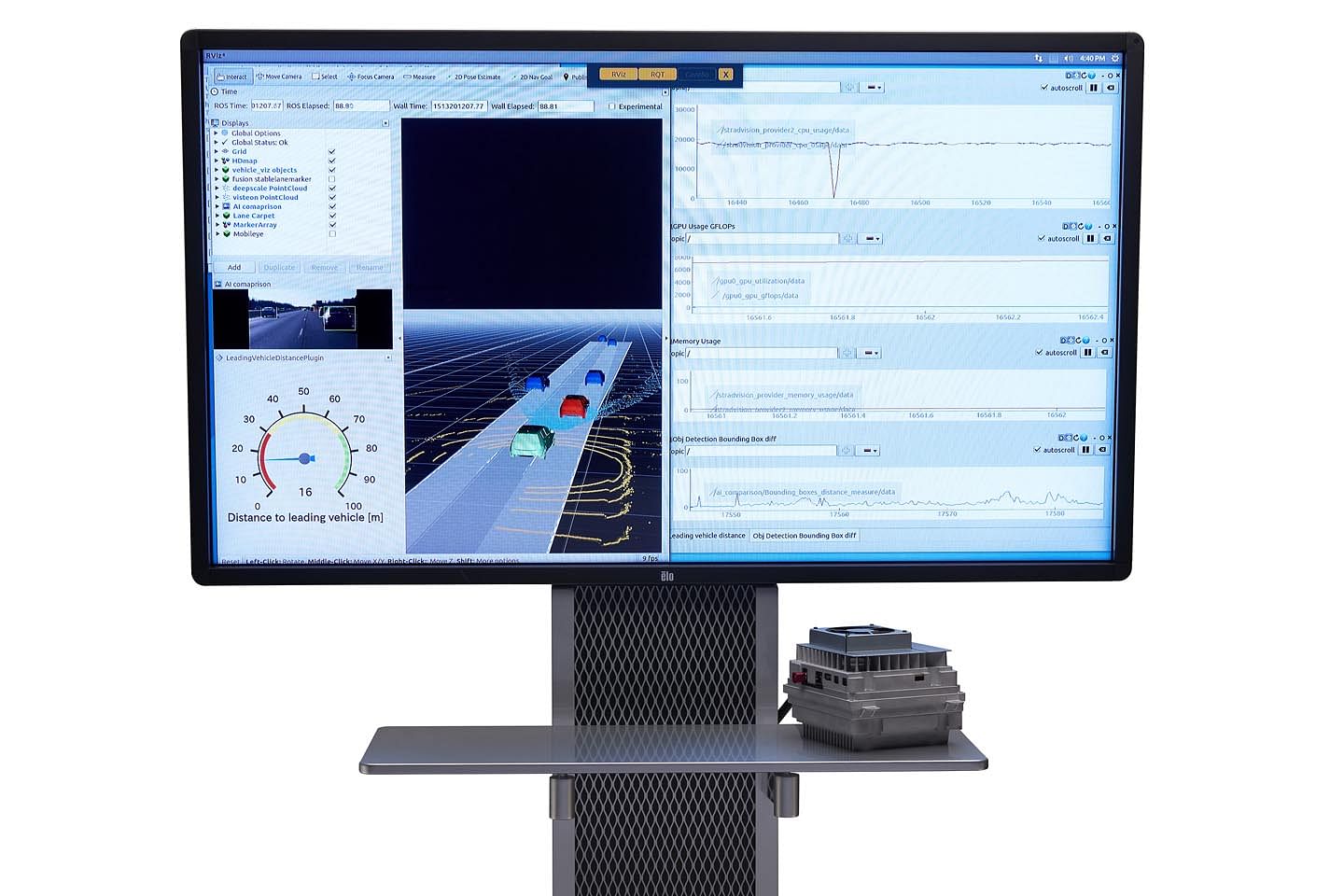
DriveCore is a scalable central computing system for Level 3 and above autonomous driving solutions.
Visteon has developed a new technology called DriveCore that offers car manufacturers a hardware and software technology solution to develop these autonomous driving systems. DriveCore is the central processing brain of the autonomous system and is responsible for integrating data from all sensors that are connected to the vehicle. Using machine learning algorithms, the system can perform the tasks of perception, path planning, and then actuation to mimic the behaviour of a human driver and control the vehicle.
Successful implementation of autonomous driving technologies will require collaboration from multiple companies that offer specific expertise in different aspects of the solution. Our investment in new technologies such as machine learning and collaboration with leading tech partners will help drive the future of autonomous driving.
INDIA'S ROLE IN TECHNOLOGY ADVANCEMENT
India will play a key role in developing and advancing the technologies discussed above. Visteon has a team of over 1,000 engineers across three technical centres in India – in Chennai, Pune and Bangalore – that are a key part of our technology development organisation. These teams have the software and product engineering capabilities to support the needs of
global automakers and contribute to global development of advanced technologies in areas such as artificial intelligence, deep machine learning and cybersecurity. Visteon is growing its presence in India and expects to double its engineering footprint over the next three years.
In addition, Indian vehicle manufacturers have shown a desire to leapfrog current technology and use next-generation solutions. Visteon is working with Indian OEMs on all-digital clusters and infotainment systems as well as SmartCore-based domain controller solutions. And upon launch of the DriveCore autonomous driving solution early this year, we expect to work with these OEMs on this front as well.
As automotive technology speeds ahead, advancements in cockpit electronics will determine how quickly and effectively the industry embraces the era of digitisation and autonomous driving. I look forward to Visteon leading the way in these advancements.
This exclusive feature has been published in Autocar Professional's 13th Anniversary Issue. (All photographs and illustrations copyright Visteon)
Also read:
RELATED ARTICLES
Belrise Industries: A Story of Grit and Focus
The Belrise Industries IPO is the culmination of a multi-decade journey by entrepreneur Shrikant Badve that started in a...
Mahindra and Lightweighting: Solid Steel To Nimble Aluminum
Stricter emission regulations and rising fuel efficiency targets are driving a fundamental transformation in powertrain ...
Hero vs Honda: In Numbers
A Comparative Study of Honda Motorcycle & Scooter India and Hero MotoCorp.





 20 Jan 2018
20 Jan 2018
 20598 Views
20598 Views





 Shahkar Abidi
Shahkar Abidi


 Ketan Thakkar
Ketan Thakkar

 Autocar Professional Bureau
Autocar Professional Bureau

